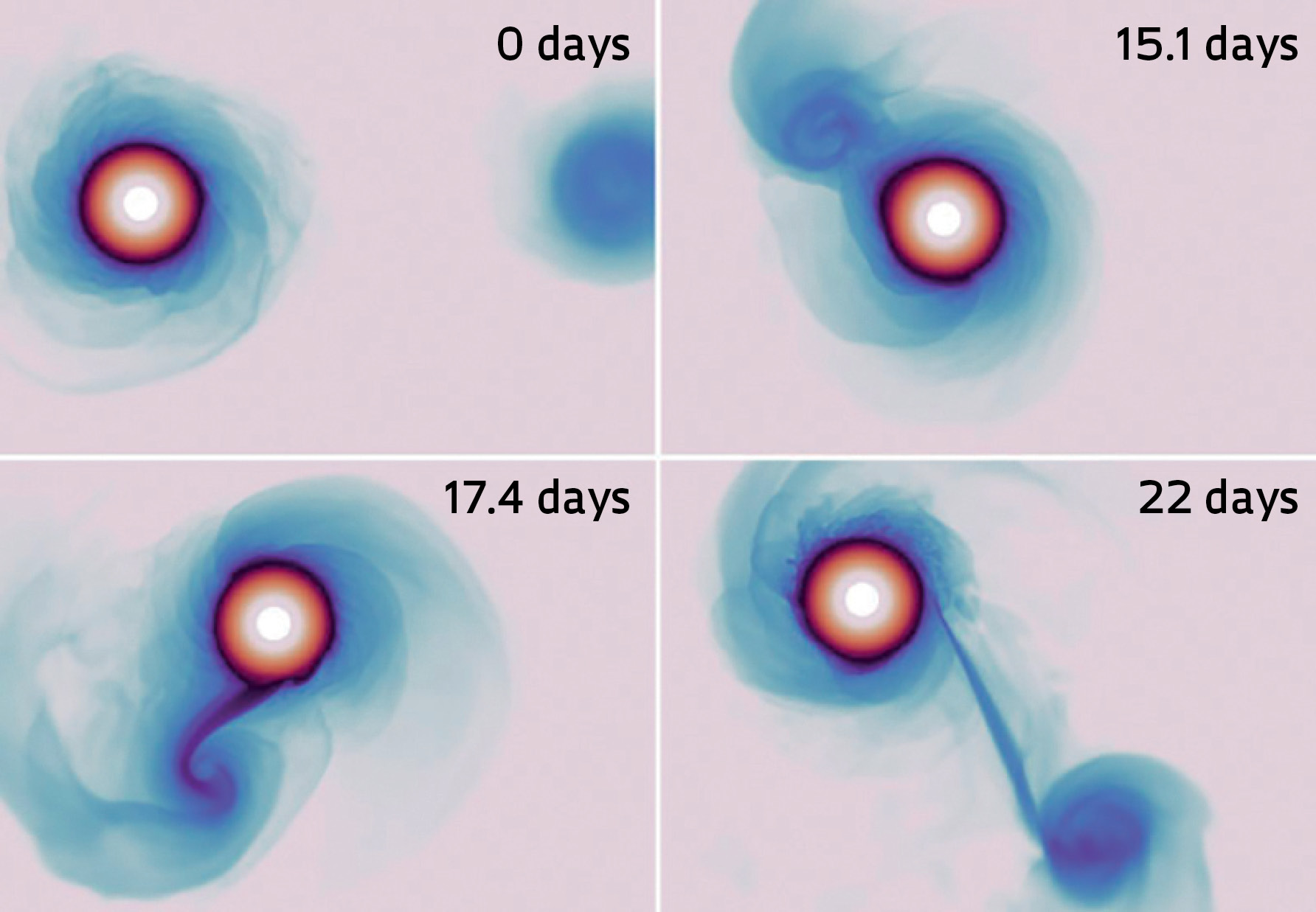
MACLEOD, M. & LOEB, A. Nature Astronomy. 2023Depiction of the movement of the stars and debris launched from one of themMACLEOD, M. & LOEB, A. Nature Astronomy. 2023
In the Large Magellanic Cloud, a galaxy that orbits the Milky Way, two stars some 160,000 light-years from Earth pass close by each other approximately every 33 days. As they pass, the brightness of the largest star, which has 35 times the mass of the Sun, varies greatly (the other star in the system known as Macho 80.7443.1718 has at least 10 solar masses). A team from the Harvard & Smithsonian Center for Astrophysics, USA, used computer simulations to determine the likely cause of the variation in brightness: the gravitational forces resulting from the proximity of the stars causes the tides of the plasma on the surfaces of both stars to increase, in the same way that the Moon pulls the Earth’s oceans (plasma is a state of matter similar to gas, but much hotter). Enormous plasma waves are formed, reaching heights of up to 3.3 million kilometers, equivalent to 2.4 times the diameter of the Sun. As they break over the surface of the larger star, the waves launch solar debris into the atmosphere, causing the stars’ orbits to shrink (Nature Astronomy, August 10; ScienceNews, August 21).
Republish